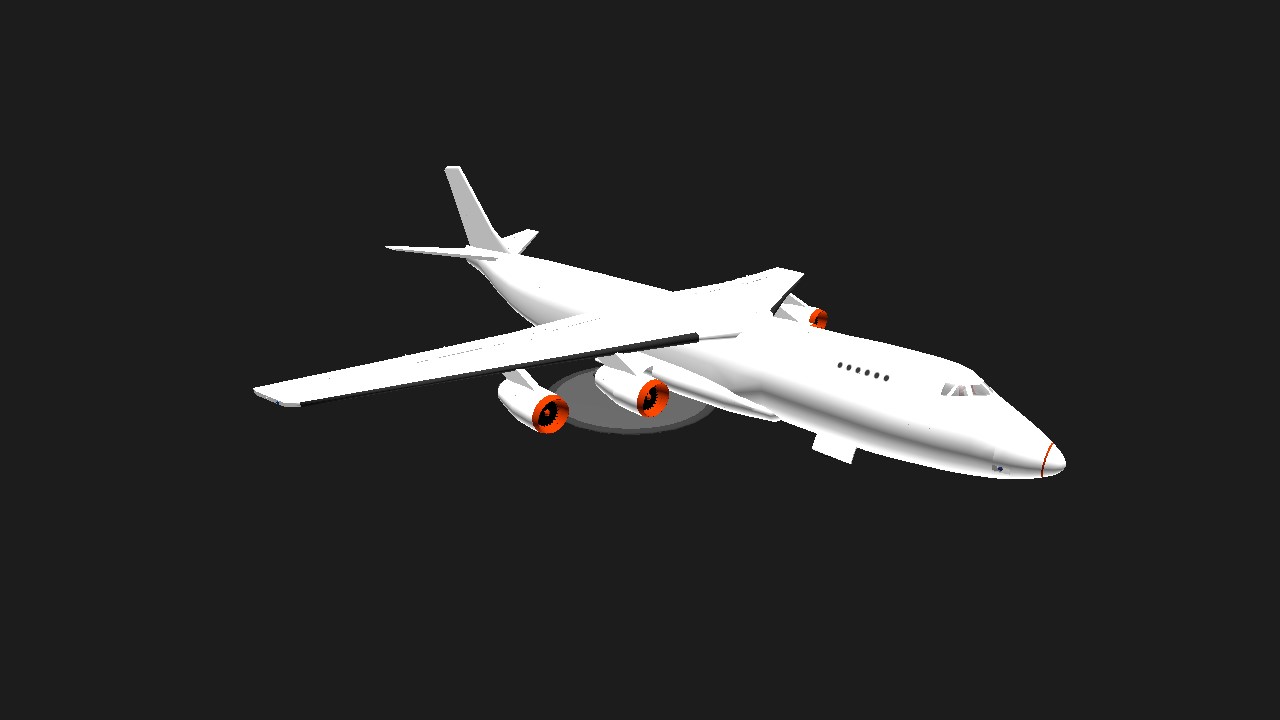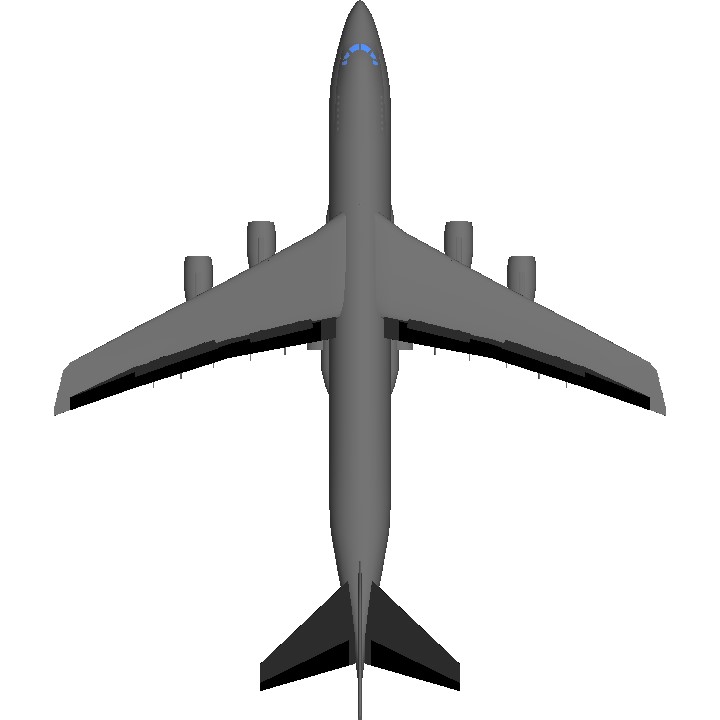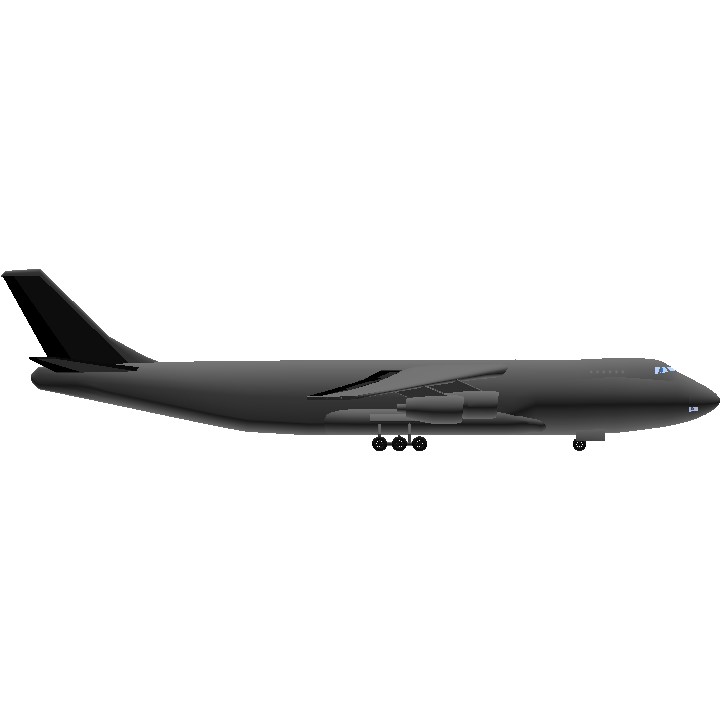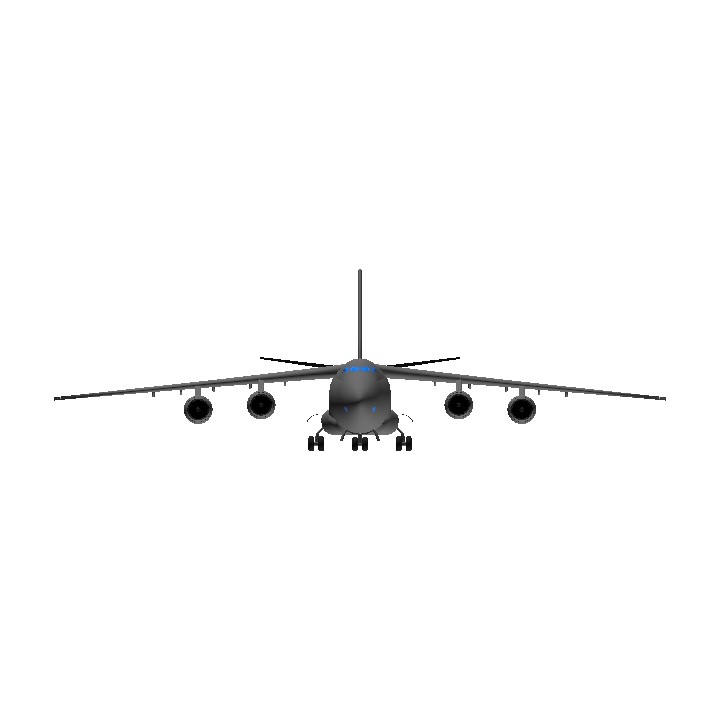No Tags
Auto Credit Based on Zerkk's ZA-237 "Brosk"
testing my autopilot on Zerkk's plane!it works
cam 1(left cockpit seat)
if you want to use the autopilot on your build,and how to apply it
here's the link: simple autopilot
credit to Zerkk,
im sorry i steal ur craft i wish it predecessor or based on... but this is the link of original aircraft! original plane
Specifications
Spotlights
- Zerkk 8 months ago
General Characteristics
- Predecessor ZA-237 "Brosk"
- Created On Android
- Wingspan 201.6ft (61.4m)
- Length 237.3ft (72.3m)
- Height 60.2ft (18.4m)
- Empty Weight N/A
- Loaded Weight 126,109lbs (57,202kg)
Performance
- Power/Weight Ratio 0.582
- Wing Loading 22.1lbs/ft2 (108.1kg/m2)
- Wing Area 5,694.4ft2 (529.0m2)
- Drag Points 2282
Parts
- Number of Parts 315
- Control Surfaces 9
- Performance Cost 1,930





@Kendog84 i haven't really played with rotator, bu i was thought if using scale from in game mods, i thought it'll make it weaker.. im not sure...
ill check on your build
If you are interested, here's some stuff I made which use rotator as number-storing memory.
You can see how much it shakes on the coords recorder.
.
Earlier version of my autopilot
https://www.simpleplanes.com/a/GXJVvB/Auto-climb-wing-leveler-gyro-TALT-3-2
Coords charter (records XYZ coordinates of your flight)
https://www.simpleplanes.com/a/Wo4LgC/XYZ-coord-recorder-Route-charter-Mk1-record-longitude-altitude-and-latitude-au
@griges
Oh I see! Sorry for the rather unnecessary tip, haha
.
As for rotator, at least on my iOS version (1.12.203.1), they don't rotate unless something is attached to the shaft/moving bit. This goes for the basic one, joint, and probably mini too.
So you need to either attach a block to the rotator, or attach rotator to a 'base' of sort, and I think there's always gonna be some shake. Looking at your autopilot FT, former method might add too many blocks.
I use a single rotator to store altitude for my own autopilot mechanism (much simpler than yours), and with this 0 mass, 0 drag, 5000 damperMultiplier basic rotator, I experience very little shake for my use (negligible), but I can't say how much it's gonna affect your FT.
.
(Mine stores 0.01 degree (of the total 180 degs) as 1 meter, and a custom variable multiplies it back again by 100, rounds it up, then a gyro (which does the holding) uses this value as target altitude.
.
I'm not sure if the size (scale) of the rotator affects the shake though. Also, I'm not sure what you were referring to by engine power, can you elaborate on that part?
@Kendog84 i am on android.. but i think theres similar way. thank you for the info!
also about rotator, it shake even nothing attached to the shaft of it?
what if i scale the rotator to almost invisibe, and scale engine power also?
i thought, if the output is not same as the the input, some calculation have a little offset
@ThomasRoderick
nice explanation 👍👌 thank you very much
so in rotator, i need one rotator per custom variable? it'll be many rotator 😂 but its interesting,i wanna try to make my button autopilot work that way, so its possible to put in Sub-assembly
@Kendog84
@griges
Yes. Near the top of the xml file the first section there's a <Variables> </Variables> section, in which the format goes as follows:
<Variables>
<Setter variable="VariableName1" function="VariableFunction1" priority="0" />
<Setter variable="VariableName2" function="VariableFunction2" priority="0" />
... etc
<Setter variable="LastVariableName" function="LastVariableFunction" priority="0" />
</Variables>
.
.
Just copy the <Setter variable="... /> parts and you should be all set. Do remember that the variable setter hates any undefined inputs with a passion, so do make sure all parts of the function use inputs that either show up in the variable setter, are vanilla inputs, are outputs from other parts, or are defined by cockpit controls.
In case you are on iOS like me... I use a free file manager app called Documents (one from Readdle) to add back predecessor ID and edit FTs and such. It lets you import/export text files (including .xml used by SP), and also open and edit them.
I'm not sure if you can add back custom variables via this method, though.
I also use a text editor app called PWEditor (free) as a bulk-replacer, when I want to replace the name of multiple custom variables or the values at once. (There's a newer version but I haven't used it yet)
You just to need to
1)first import the plane file in question to the Documents app,
2)open & copy-paste the entire contents, ie. text, to the PWEditor (or any other app that does the same) and bulk replace,
3)then copy-paste that back to the plane file in Documents,
4)then finally export it back to the SimplePlanes directory in Files app.
You just gotta be careful with how you phrase your search terms when you bulk-replace. And also, always keep a back up of the plane file you are editing.
@ThomasRoderick @griges
If rotators shake too much, I'd also add
damperMultiplierparameter to "JointRotator" field and experiment with various numbers (1000, 2000, 5000, and so on). It will slow down the speed of the rotator, but it'll (it should) make it more stable and a tiny bit more precise.@griges
The
inputshould be " inverselerp(110,80,IAS)/180", and theCurrent Angleshould be " flap ".Setting the input on the actual flaps to " flap/180 " (instead of dividing the rotator input by 180) would also work, yes, but it'd be more of a hassle, costs more time to set up and more performance to run, and adds another possible point for failure.
@ThomasRoderick lemme try understand it
so i put variable name in the rotator current angle variable? and the variable as the rotator input?
and i take, for example
if i wanna put Ft for flap that start going down at 110 m/s and full at 80m/s
i put rotator current angle name to 'flap' and input to inverselerp(110,80,IAS)
If i set rotator to 180° and min 0 max 1
the flap input will be 'flap'/180?
@griges
Right, one other thing: if the variable is designed to store a value until the next update conditions are met, then set the rotator's
activationGroupto the update condition,zeroOnDeactivateto "false", and theinputto whatever the function calculating the input is.@ThomasRoderick wow thats brilliant! i want to do that, but man, a lot of rotator to do 😂
thanks for the info!
@griges
Well.... IIRC there was some @Kendog84 guy who used rotators to store the variables, but personally I can't really say for sure about the output precision compared to the variable setter....
To store a variable with a rotator, divide the original input by the rotator's
range, then name the rotator'sCurrent Angleoutput as the original variable name. Remember thespeedof the rotator might need to be very large if the output calls for rapid changes in value.so no easy way to move custom variables@ThomasRoderick
@griges
Not really unless you want to use a text editor, I'm afraid....
thank you! @ThomasRoderick @Seeras
i think it wasn't a bug,
because i didnt modify from his plane, i use his plane as Sub-assembly,and put it to the buttons (because i dont wanna move the custom variables one by one)
are there a way to copy custom variables?
@griges
Next time the auto-crediting system bugs out, try contacting the mods or good ol' Seeras to fix it.
@ThomasRoderick
Sure 👌
@MrSilverWolf
@Seeras
@crazyplaness
Could you please make this a successor to this? Thanks!